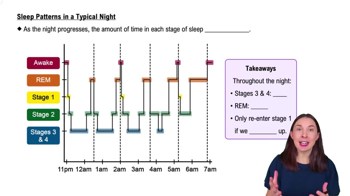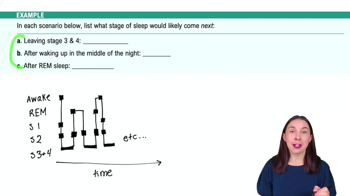Table of contents
- 1. Introduction to Psychology1h 43m
- 2. Psychology Research2h 20m
- 3. Biological Psychology2h 41m
- 4. Sensation and Perception28m
- 5. Consciousness and Sleep32m
- 6. Learning41m
- 7. Memory34m
- 8. Cognition37m
- 9. Emotion and Motivation35m
- 10. Developmental Psychology33m
- 11. Personality48m
- 12. Social Psychology41m
- 13. Stress and Health41m
- 14. Psychological Disorders44m
- 15. Treatment47m
5. Consciousness and Sleep
Sleep
Struggling with Psychology?
Join thousands of students who trust us to help them ace their exams!Watch the first videoMultiple Choice
The theory that feeling an emotion comes first as a physical reaction that leads to a behavioral response is known as the
A
common-sense theory of emotion.
B
James-Lange theory of emotion.
C
Cannon-Bard theory of emotion.
D
cognitive arousal theory.
 Verified step by step guidance
Verified step by step guidance1
Identify the key components of each theory of emotion mentioned in the problem.
Understand that the James-Lange theory of emotion suggests that a physical reaction occurs first, which then leads to the experience of emotion.
Recognize that the Cannon-Bard theory proposes that emotions and physical reactions occur simultaneously and independently.
Note that the cognitive arousal theory, also known as the Schachter-Singer theory, involves both physiological arousal and cognitive interpretation to experience emotion.
Compare these theories to determine which one aligns with the description of a physical reaction leading to a behavioral response, which is characteristic of the James-Lange theory.

 3:25m
3:25mWatch next
Master Circadian Rhythms with a bite sized video explanation from Hannah Gordils
Start learningRelated Videos
Related Practice


































































































![Race, Genes and IQ Differences | Bret Weinstein [Mini Clip]](https://img.youtube.com/vi/IztL_m3pd70/mqdefault.jpg)



































































































